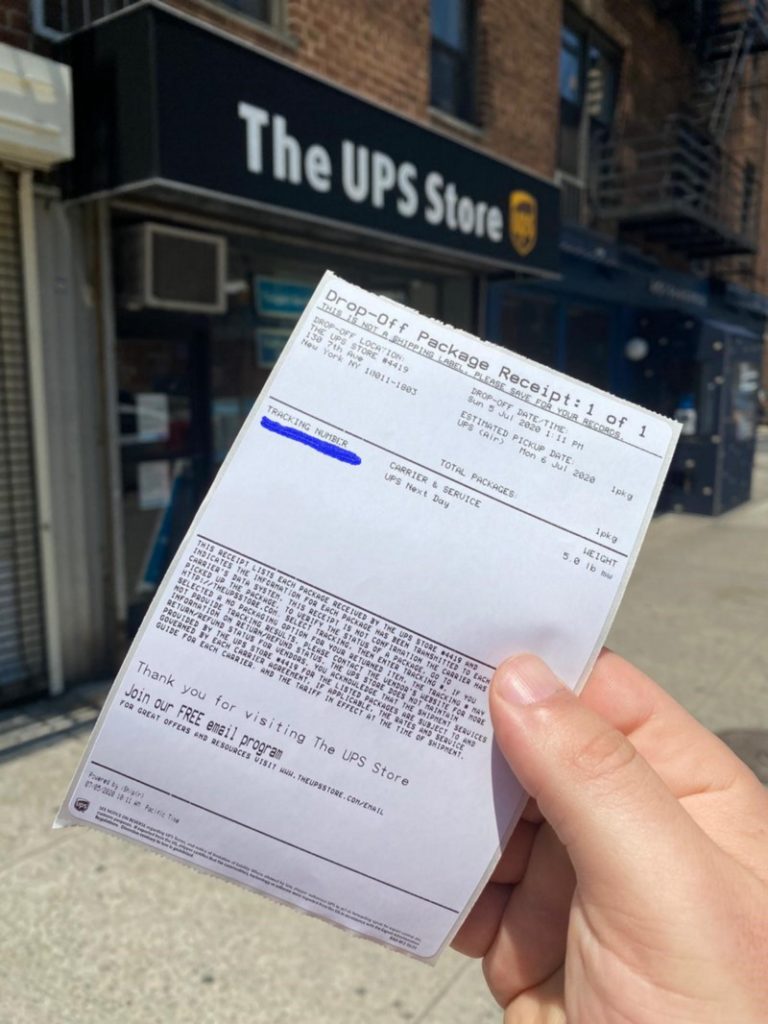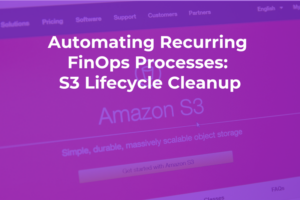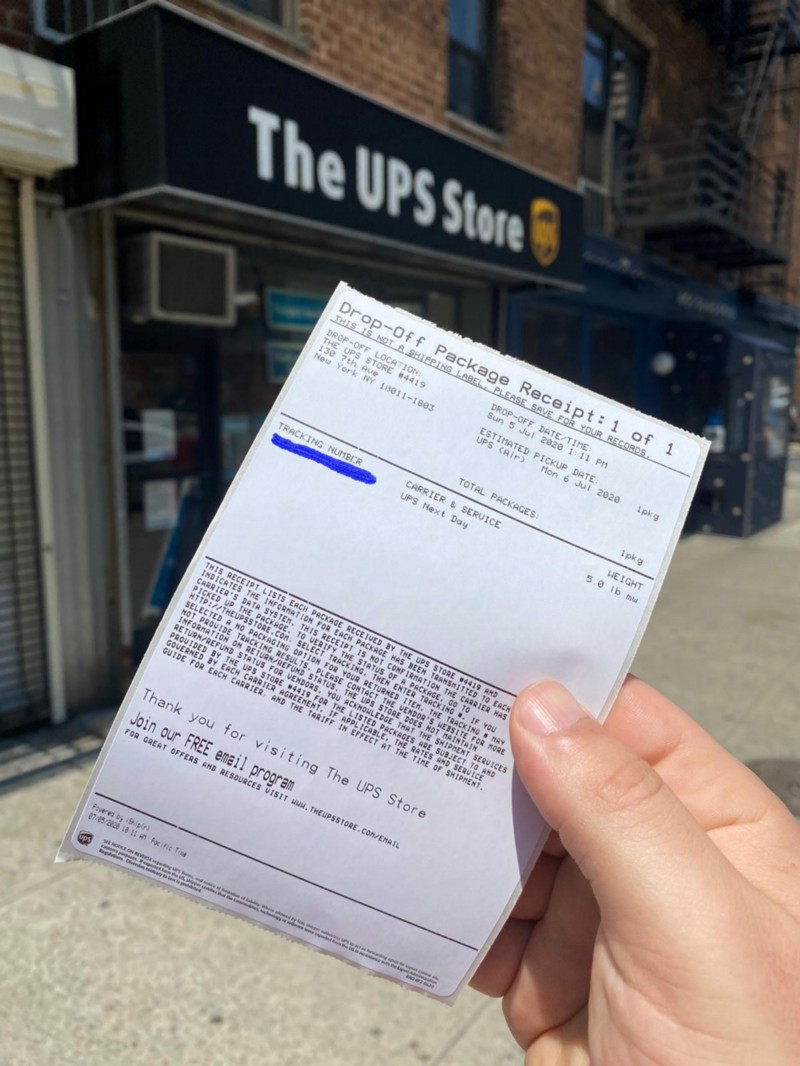
Note — This post is not technical — but explains the steps in ordering and receiving Snowcone from AWS.
AWS recently launched AWS Snowcone, a new device in the Snow Family that allows you to import and export files from AWS S3 bucket to your home/office/data center.
When you want to transfer a large amount of data to or from the cloud, the broadband line that you’ll have is likely, not fast enough.
Another common issue is that the transfer process uses up all of the bandwidth to upload to the cloud, and as a result slows down other network users.
There are already two other devices in the Snow Family: AWS Snowball (47 pounds/21.3 Kg) and AWS Snowmobile (68,000 pounds/30,845 Kg) — Yes, that’s a full-size trailer truck.
While the two other devices are big, bulky, and loud, the Snowcone is a small device that you can put in your bag or take by hand. It weighs 4.5 pounds/2 Kg, and the delivery time is one business day. While costing $60 per job, the first five days of usage are included in the service fee.
The shipping fee is not included and will be added to the job cost.
My Snowcone experience
The device launched on June 17th, 2020. And I ordered it one week later on June 24th. The first message I saw is that due to high demand, the delivery will take longer than one business day.
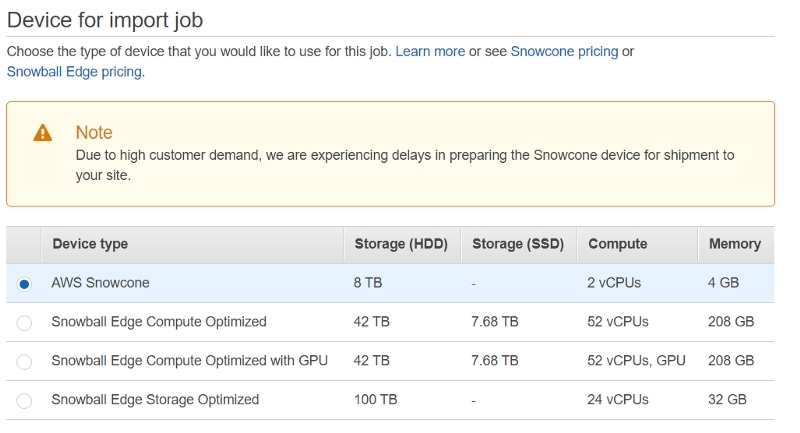
Four business days later, a UPS courier handed me the device without a box, power supply, or a network cable. At the time of order, you indicate that you have a 45W USB-C power supply. I used my MacBook Pro charger.
My first impression was that the device is rigid and dirty (I estimate it to be at least a few months old).
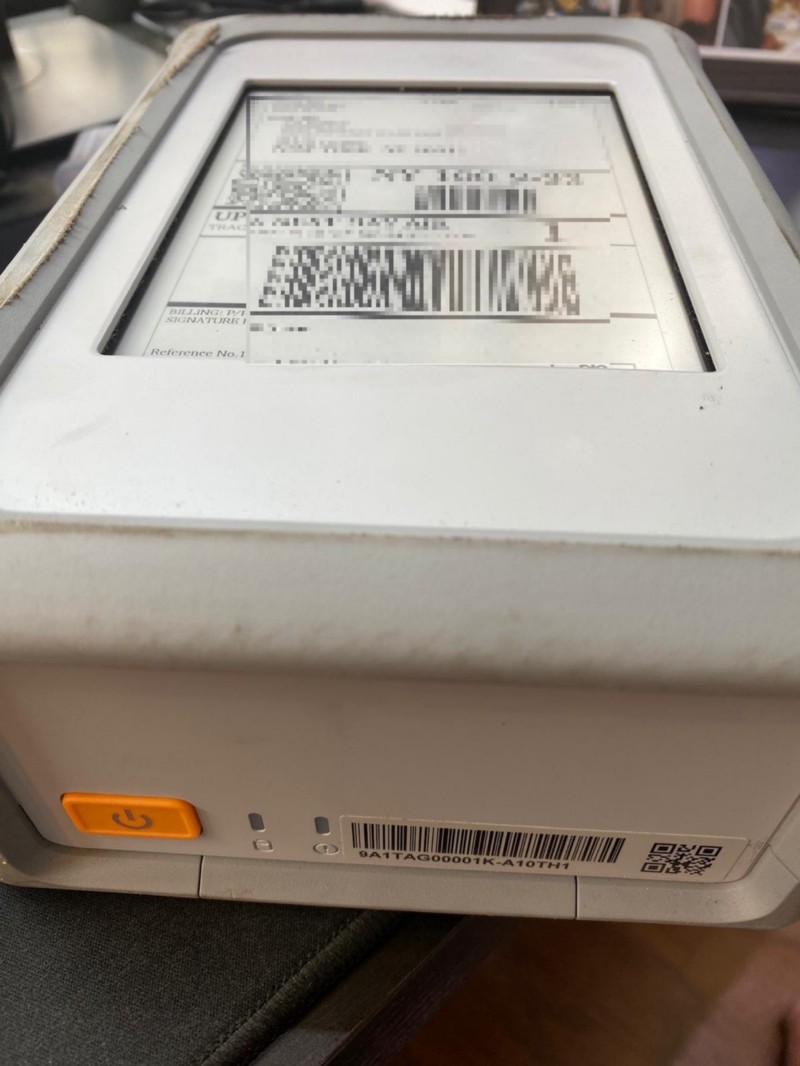
Once you plug to the power supply, the Kindle-like touchscreen refreshes and displays the boot process. You can manually set the IP address if you do not have DHCP on your network.
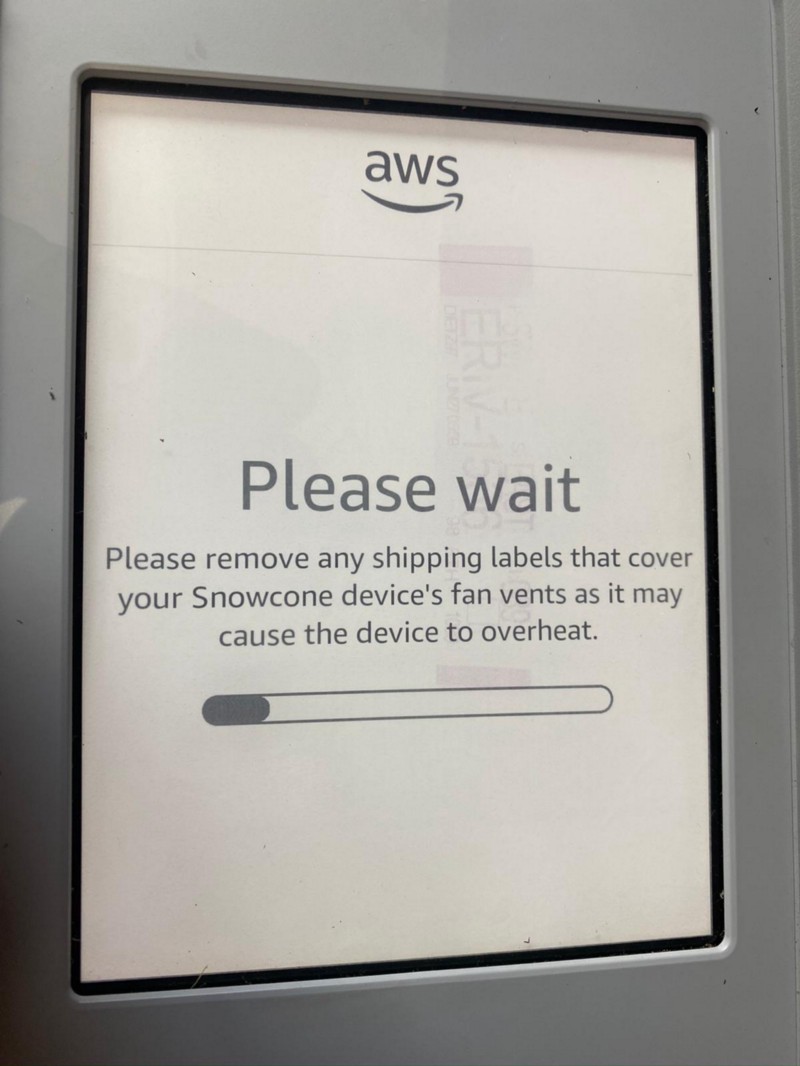
Once you disconnect the power supply, the Kindle-like screen will refresh again and display the shipping label back to AWS.
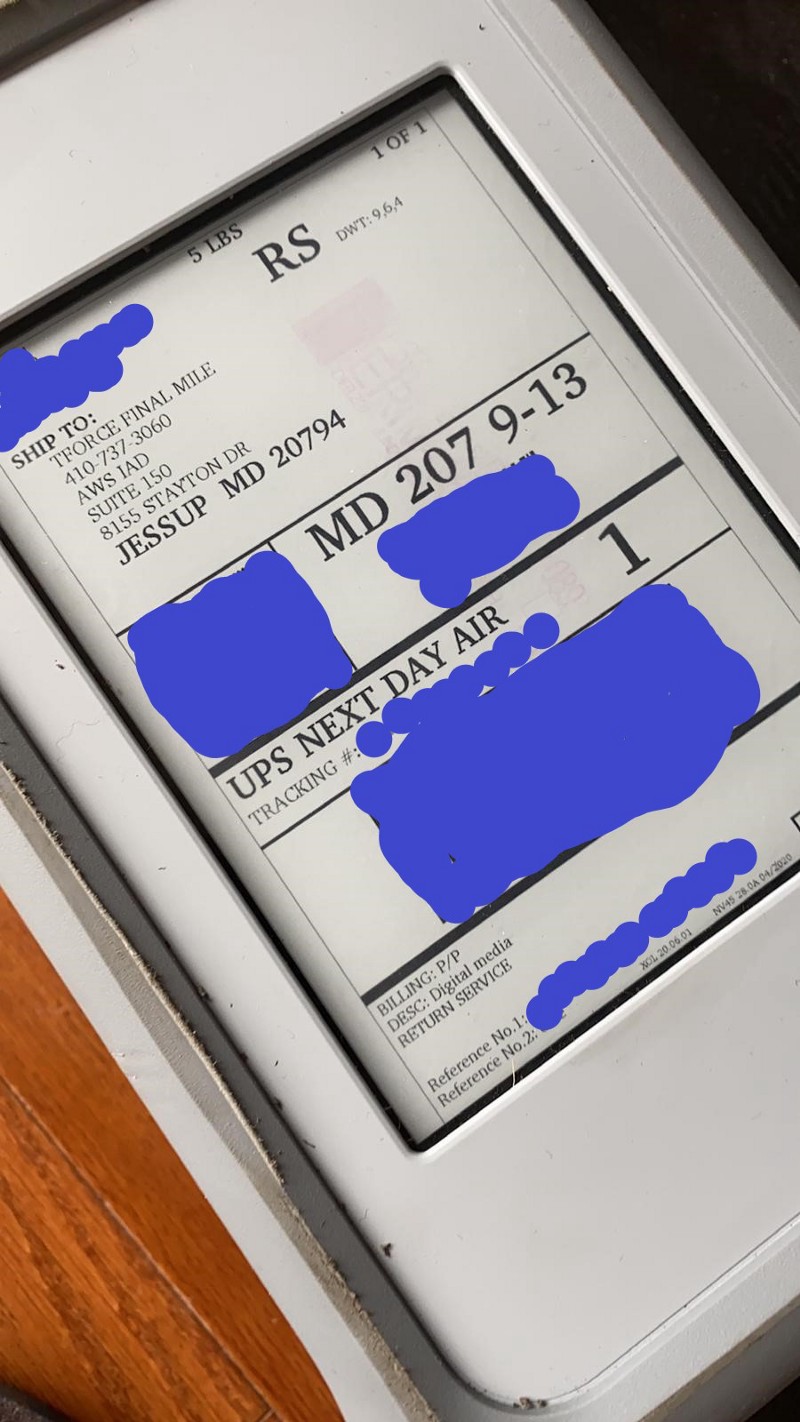
I did have one issue with the device: it came with two RJ-45 ports (ethernet ports). after I configured the device to connect to port 1, I plugged the network to port 2. This is the generic error message the device displays:
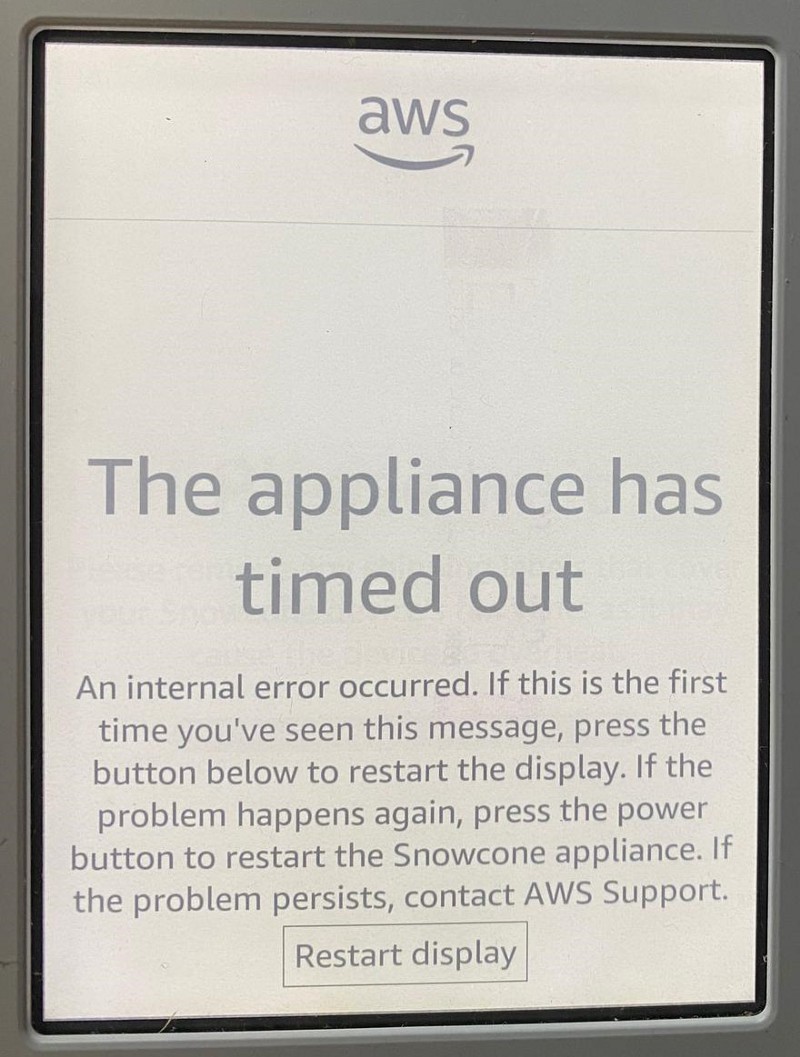
I don’t have an AWS support plan, but I managed to figure it out by myself.
After a week of copying files, I took the device with me to the UPS store and shipped it back to AWS.

After three days, on July 8th it arrived at AWS. And after 6 more days, on July 14, the files imported to the bucket.
In conclusion, AWS Snowcone is a very convenient device that makes it easier to transfer large files to and from the cloud.
Timeline of events
Here is the full timeline:
- AWS Snowcone announced by AWS on 2020–06–17
- The job was created on 2020–06–24 05:53 AM EST.
- The Snowcone got allocated on 2020–06–25 05:41 PM EST.
- The Snowcone was shipped on 2020–06–26 09:36 PM from Chantilly, VA.
- The Snowcone arrived by UPS carrier on 2020–06–29 01:12 PM EST.
- The Snowcone was shipped back to AWS on 2020–07–05 05:28 PM EST.
- The Snowcone was at our sorting facility on 2020–07–07 02:10 PM EST.
- The Snowcone was at AWS on 2020–07–08 01:47 PM EST.
- The data transfer started on 2020–07–14 08:56 PM EST.
Summary
To summarize, from the moment UPS shipped the device until AWS imported the files, it took 9 days, 3 hours, and 28 minutes. If we divide the Snowcone size (8Tb) by the number of seconds it took to upload data, we get around 80Mbit/s.
